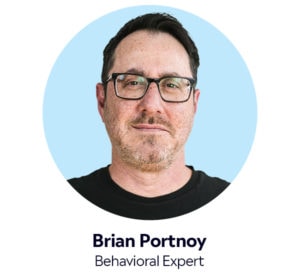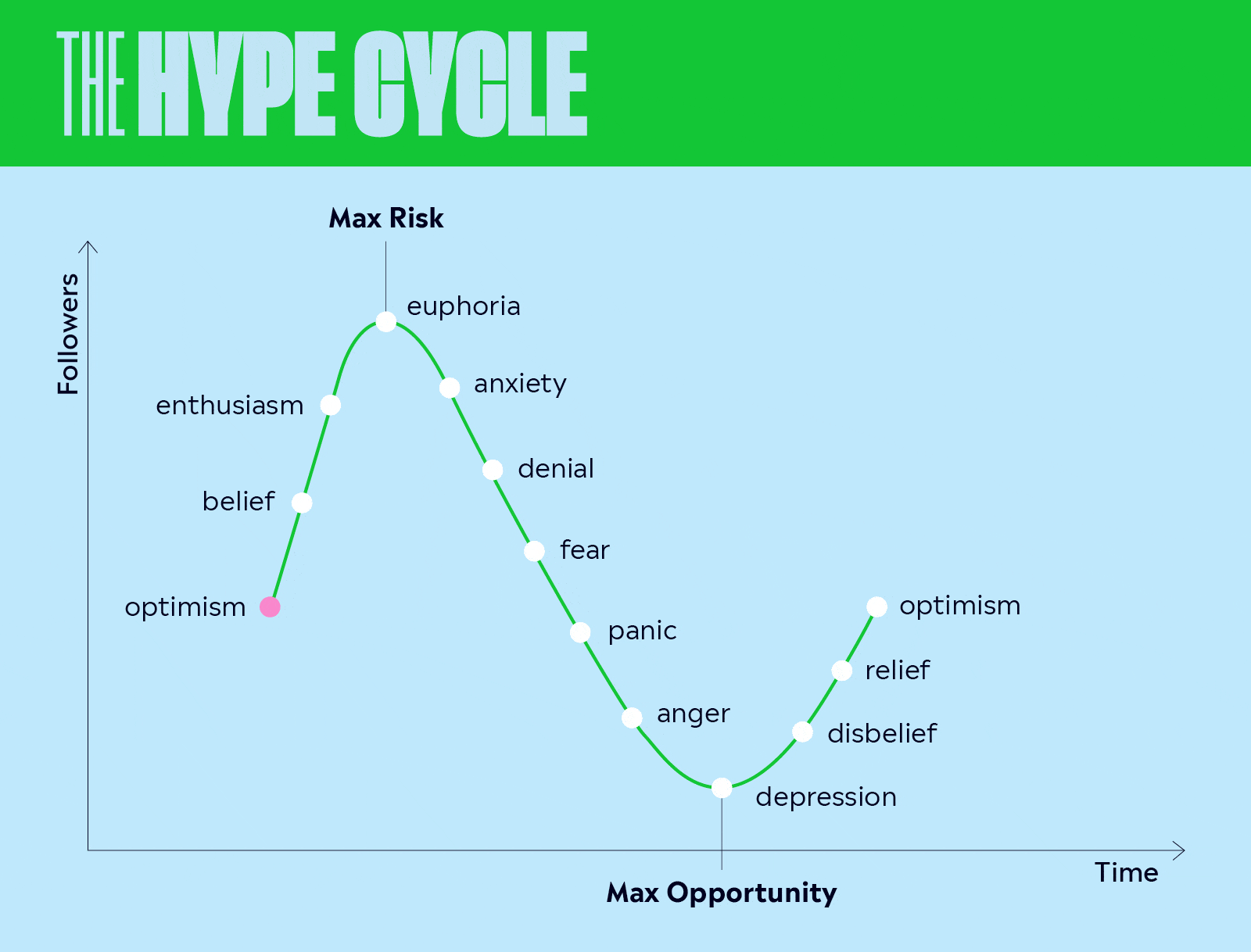
For many people, it’s hard to separate their money from their emotions. More than half of Americans (53%) get anxious thinking about their finances, according to a survey from FINRA (Financial Industry Regulation Authority).
Whether paying bills, saving for retirement, or planning for a major purchase (e.g., buying a home), it’s reasonable that feelings of stress, uncertainty, and frustration can prevail. On the opposite end, eliminating debt, getting a new job/raise, or being approved for a mortgage can bring on feelings of relief, excitement, and optimism.
When it comes to investing, it’s likely you’ll experience all the emotions above and then some. People are understandably cautious with their money and how they use it. As a result, the unpredictable nature of investing can bring on a litany of feelings, from the anticipation of getting involved to the rollercoaster ride that follows.

“Money is an emotional lightning rod,” said Brian Portnoy, author of The Geometry of Wealth and The Investor’s Paradox. “Fear, anger, joy, hope, sadness. It all exists through money.”
Portnoy is one of the world’s leading experts on the psychology of money, with over 20 years of experience as an investor and educator. We spoke to him about the psychological impact of social investing and the mental balancing act involved in embracing a community while still keeping personal financial goals in check.
Confidence is key
Portnoy highlighted the important role confidence plays in not only deciding when and how to invest, but when joining an investing community. Confidence, as he describes it, is a matter of trust, whether it’s in yourself or through participation in a group.
Luckily, you can naturally build confidence — or trust in yourself — by practicing your decision-making. Should you eat that PB&J for lunch? Should you wear the black or the blue top? Should you buy more Apple stock? Life is just a long series of decisions.
“Your ability to own a decision ― trivial or profound ― is important. If you lack confidence, it means the natural feedback loop you receive is something you’ll struggle with,” noted Portnoy. “It’s hard to frame the problem, it’s hard to collect the relevant info, and it’s hard to calmly evaluate that you’re headed in the right direction.”
Without confidence, the psychological effect of investing can be pretty taxing. When investing, you’re combining the key skill of sound decision-making with the significant “emotional lightning rod” that is your money.
So before you invest, make sure you’re confidently prepared for what lies ahead. Know why you’re investing — for retirement, a nest egg, that dreamy beach house — and use that as your north star as you pick securities and construct your portfolio. It will make the mental aspect easier if you know what your goals are and what you need to prepare for when creating your long-term investing strategy.
To feel more confident as an investor, stay engaged with the markets and study up on mental models. Try not to shy away from your strategy when times get tough. When I’m in a pinch, I tend to lean on what I know versus what I’m assuming — first principles thinking.
Beware of bravado
Expanding on the concept, Portnoy said it’s important to distinguish confidence from bravado. Confident investing means more than taking a bullish approach on a hot stock or crypto asset, especially when you’re not doing the work or looking at the bigger picture.

“Confidence is having spent the time, thinking and planning on what you need to know for the future. Bravado is just taking a tough stance,” said Portnoy.
Similarly, investing is different from the speculating associated with trading, where buying up a hot stock can almost be viewed as a get-rich-quick scheme. By making the asset you invest in your first priority, you’re kind of putting the cart before the horse.
We all want to make money, but if you’re investing just to get rich, you may start mistaking your confidence for bravado, and that could lead to unhealthy risk-taking. Plus, confidence is knowing the right path for yourself, not what the crowd thinks is the right path.
Remember, your goals and needs are your own, and your portfolio will likely reflect that. Don’t get caught up chasing somebody else’s dream. Sometimes, it can be helpful to choose time and price targets for a security ahead of time so your emotions don’t get the best of you when you’re ready to make moves. Let the numbers guide you, not your gut.
Mindfulness over your mind
So why is it so easy to get lost in the crowd? Portnoy noted it may be more instinctive than you think.
“We’re wired to be invested in others; we’re wired to belong,” he noted. “At the same time, if we’re not sufficiently self-aware of that dynamic, we can chase what others are chasing without realizing the impact.”
The juxtaposition of freedom vs. belonging, as Portnoy described it, is crucial when it comes to social investing. A big part of investing is forging a path to your own financial freedom, while social investing lends itself to the idea of belonging ― being part of a group that harnesses the “wisdom of the crowd.”

“We have this deep-seated tension. We want to do our own thing and be attached to others at the same time,” explained Portnoy.
While this may seem like a sign of internal conflict, it doesn’t have to be. The benefit of social investing isn’t following the most popular trend of the moment (that’s bravado), it’s using all of the resources available to build the strategy that makes the most sense for you.
In fact, Portnoy described social investing as a healthy mental exercise, not only for leaning on expertise, but for collecting information on where conventional wisdom and contrarian thinking meet. After collecting all of the insights, you can discover where you land on a number of investing choices and make better informed decisions.
“If you mindlessly follow the pack, you’ll get what you get and that’s not always a good thing,” Portnoy said. “Mindfully participating in a group of investors is the smarter thing to do.”
Mindfulness can also help you stay anchored when narratives change the market mood. Today’s environment is a great example of that. You may understandably feel anxious about the future — there’s a lot to feel anxious about! — but try not to get swept up in the uber-pessimistic tide.
I hate to sound like a broken record, but it’s easier to stay mindful when you have goals and steps to reach those goals. Having an honesty hour with yourself about your intentions as an investor may be the most valuable investment you’ll make. Your investing horizon and risk tolerance could flip your perspective on markets.

